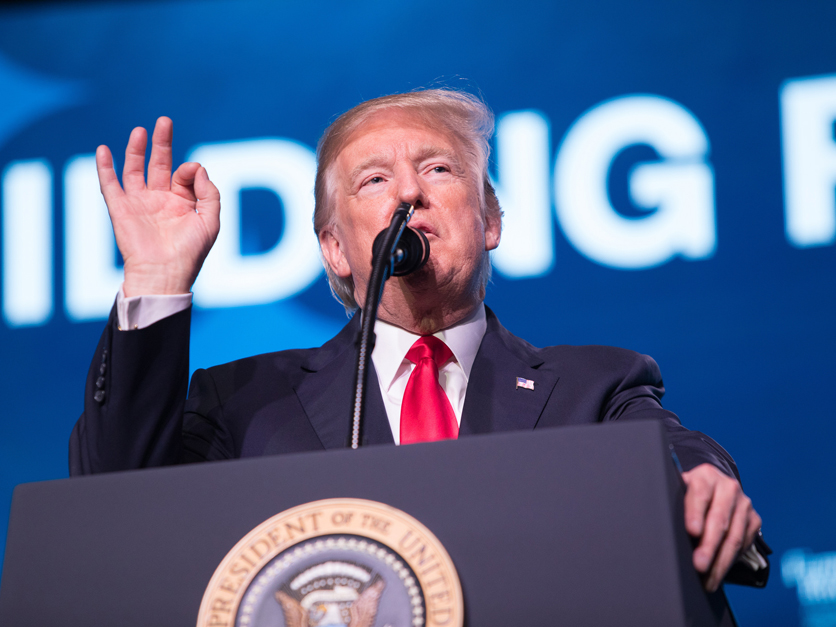President Donald Trump said Thursday he will hit roughly $300 billion worth of Chinese goods — effectively the only goods remaining untaxed in the ongoing trade war — with a 10% tariff on Sept. 1, raising concerns that the recently renewed trade talks are not going well.
Trump, in a series of tweets, chastised China for not following through on promises to increase imports of U.S. farm goods and stop shipping fentanyl to the U.S.
It was soon after U.S. Trade Representative Robert Lighthizer and Treasury Secretary Steven Mnuchin returned Thursday after two days of talks in Shanghai that Trump tweeted: “Trade talks are continuing, and during the talks the U.S. will start, on September 1st, putting a small additional tariff of 10% on the remaining 300 Billion Dollars of goods and products coming from China into our Country … We look forward to continuing our positive dialogue with China on a comprehensive Trade Deal, and feel that the future between our two countries will be a very bright one!”
It’s unclear what the Chinese reaction will be. Back in early May, after the U.S. first threatened to hit the remaining $300 billion worth of Chinese goods with a 25% tariff, China’s Finance Ministry threatened to raise tariff rates on $60 billion worth of U.S. products, including farm commodities such as citrus fruit, berries, vegetables and nuts.
The new U.S. tariff is expected to impact importers who rely on glyphosate and 28 other pesticide products from China.
China may not be living up to all of its promises, but the country is buying U.S. soybeans. The USDA is reporting Thursday net sales of 66,800 metric tons of U.S. soybeans to China during the week of July 19-25 and exports of 531,800 metric tons.
The White House on Wednesday announced with little fanfare that the Shanghai talks had wrapped up and U.S. and Chinese negotiators will meet again in early September.
But the new tariffs are an escalation that China watchers thought had been avoided. Lighthizer, reacting to what he called broken promises from China, announced on May 8 plans to hit the remaining untaxed Chinese goods with a 25% tariff, but Trump put that on hold after a June 29 meeting with Chinese President Xi Jinping on the sidelines of a G-20 summit in Osaka, Japan.
That meeting between Trump and Xi was heralded by the U.S. ag sector, most of which has been sharply impacted by Chinese retaliatory tariffs.
For more news, go to www.Agri-Pulse.com.


